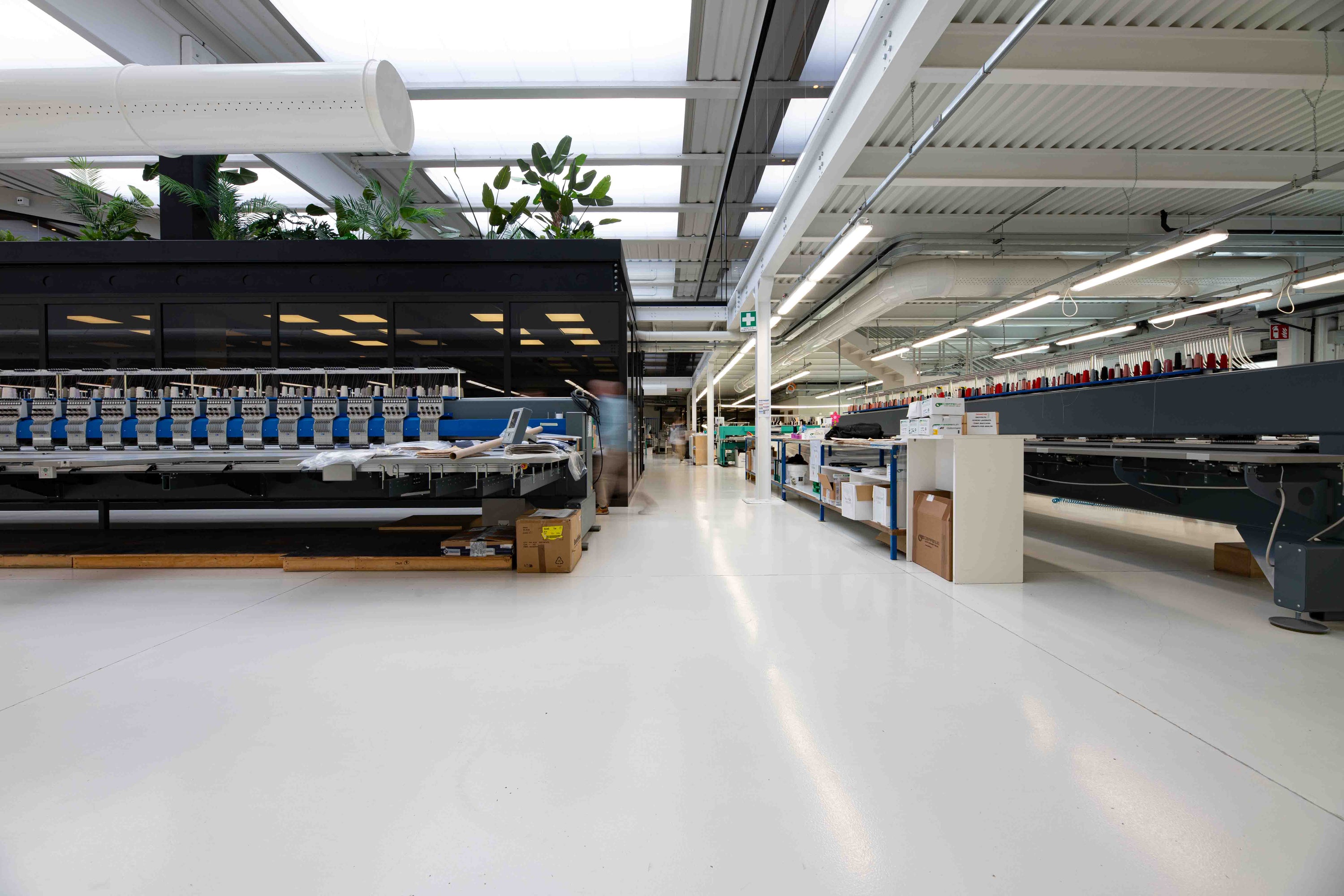When two excellences meet.
Today we present a project we completed on behalf of an Italian excellence, a leader in the automatic embroidery sector, operating for over 30 years in the Vicenza area with clients all over the world.
On their behalf, our professionals opted for a Multilayer Resin Coating; this type of flooring is characterized by four processing phases.
Multilayer Resin Cycles
Before starting the processing cycle, the craftsmen who worked on this project carried out a sanding job on the existing floor. Afterwards, an adhesion primer was applied to improve and facilitate the bonding of the resin to the substrate.
Next, the smoothing process began with epoxy resin and quartz broadcasting on the fresh resin to increase the mechanical strength of the system and to create a rough surface that facilitates the anchoring of the next layer.
The second-to-last cycle carried out was the closing smoothing with pigmented epoxy resin, whose main functions are:
-
To close and level the surface after the quartz broadcasting by covering the granules, preventing them from detaching or remaining exposed
-
To give color uniformity
-
To protect the floor from abrasion, impacts, and chemical agents, also serving as a base for the final phase of the cycle
Finally, a roller coating with pigmented epoxy resin was applied, giving this type of finish a uniform and bright appearance, also creating a protective film resistant to wear, oils, water, chemicals, and detergents.
Why choose this type of coating?
The Multilayer Resin Coating was chosen because, thanks to its multiple cycles, it maintains a greater thickness, making the surface more resistant to impacts and heavy vehicle traffic. Among its features, its ease of cleaning stands out: the surface does not absorb dirt or liquids, making it simple and quick to sanitize. Added to all this is a fundamental element—workplace safety, as the coating is anti-slip.
When is it recommended?
This type of coating, due to its characteristics, is especially recommended for industrial activities, storage or logistics warehouses, mechanical workshops, and industries with heavy vehicle traffic.



